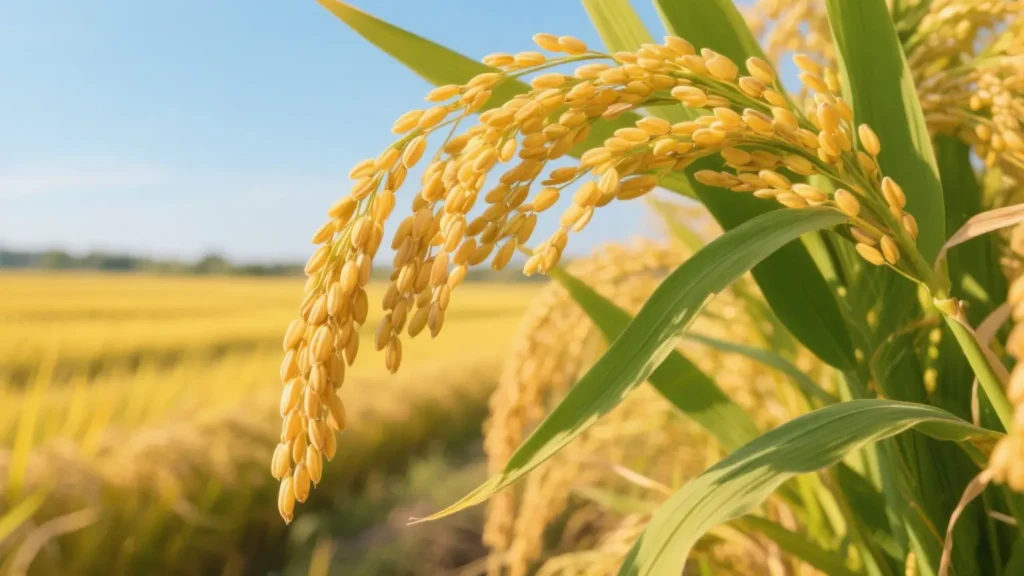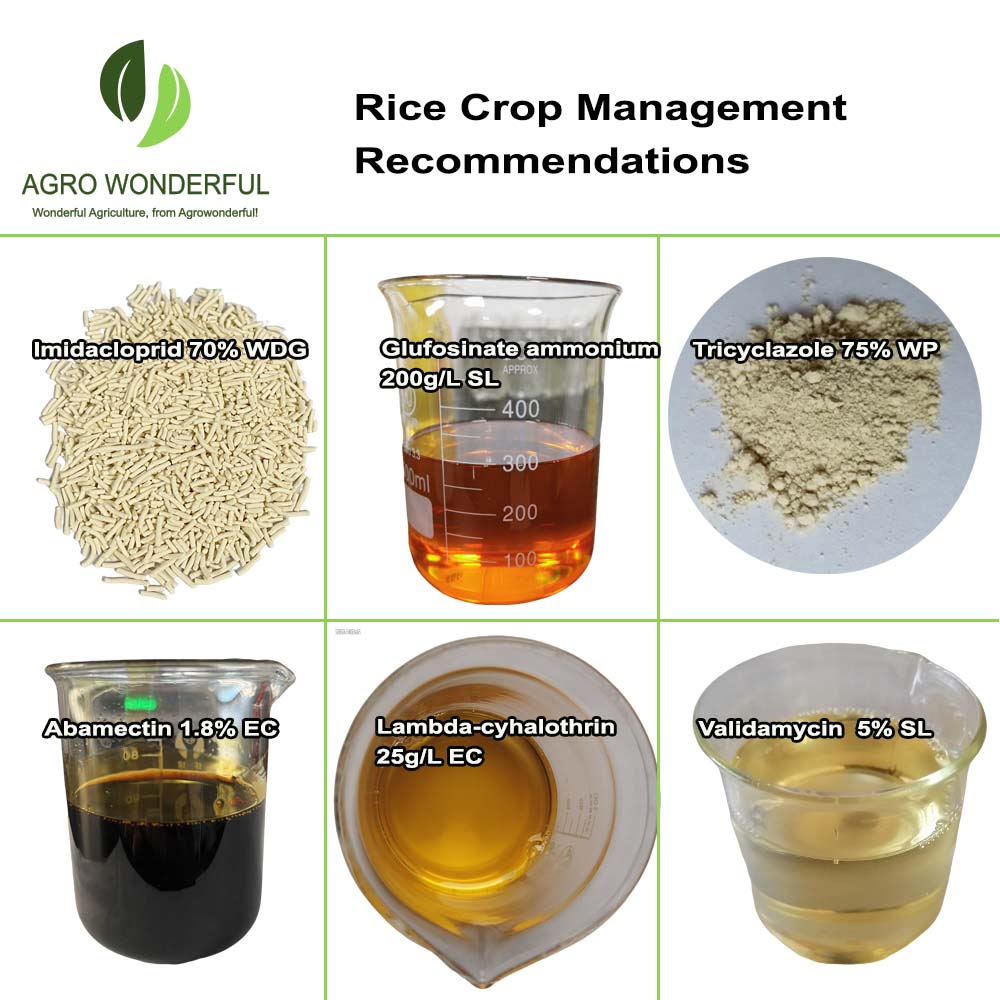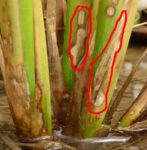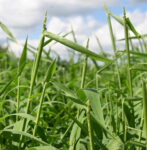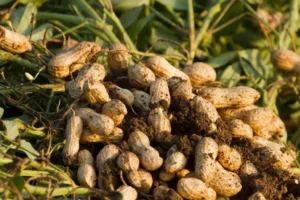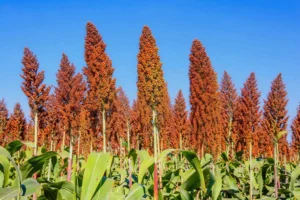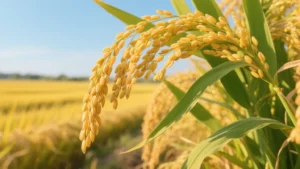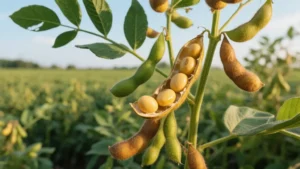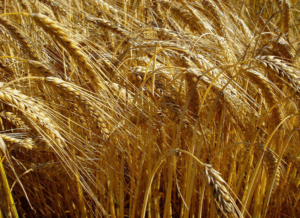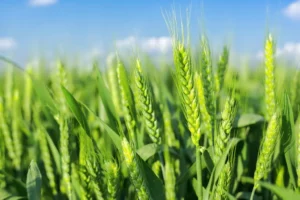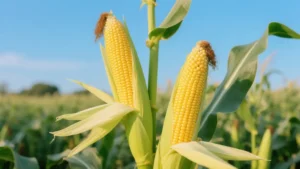Crop: Rice
Overview
Rice Crop Management Recommendations
◆ Select Resistant Varieties: Even with resistant varieties, use Imidacloprid 70% WDG for seed treatment to prevent early-stage pests.
◆ Good Agronomic Practices: Combined with field sanitation, apply Glufosinate ammonium 200g/L SL before ploughing to effectively eliminate weeds and reduce pest sources.
◆ Balanced Fertilization: To prevent rice blast induced by excessive nitrogen, apply Tricyclazole 75% WP during the tillering stage for prevention.
◆ Pest Monitoring: Upon detecting borers or planthoppers, promptly use Abamectin 1.8% EC for its broad-spectrum efficacy and low cost.
◆ Integrated Control: Prioritize biopesticides. In early outbreak stages, use Lambda-cyhalothrin 25g/L EC for its targeted action and safety to beneficial insects.
◆ Water Management: Poor humidity management can lead to sheath blight. Apply Validamycin 5% SL as needed, known for its specific and stable control.
Common Rice Diseases
1. Rice Blast
-
Symptoms: Lesions on leaves/panicles, eye-shaped spots with gray centers.
-
Favorable Conditions: High humidity, cool temperatures, excess nitrogen.
-
Management: Apply Tricyclazole 75% WP early or at tillering/heading stages.
2. Sheath Blight - Fungal
-
Symptoms: Oval lesions on leaf sheaths, “green island” effect.
-
Favorable Conditions: Dense planting, high humidity, flooding.
-
Management: Spray Validamycin 5% AS on lower stems at disease onset.
3. Bacterial Leaf Blight - Bacterial
-
Symptoms: Yellow streaks on leaves, wilting, white exudate.
-
Favorable Conditions: Floods, wounds, high nitrogen.
-
Management: Use Bismerthiazol 20% WP after storms or at first symptoms.
4. Bacterial Leaf Streak - Bacterial
- Symptoms: Water-soaked streaks between veins turning yellow.
- Favorable Conditions: Warm storms, contaminated water.
- Management: Apply Kasugamycin 2% SL preventively or early in outbreaks.
Major Insect Pests
1. Rice Planthopper
-
Identification: Small insects that cluster at the base of rice plants, sucking sap. This causes yellowing, wilting, and can transmit viral diseases.
-
Disease occurrence conditions: Hot, dry weather; dense planting; excessive nitrogen fertilizer.
-
Management: Apply Imidacloprid 70% WP or Thiamethoxam 25% WG as a foliar spray or soil application.
2. Rice Stem Borer
-
Identification: Larvae bore into and feed inside rice stems, causing “dead hearts” (in seedlings) and “white heads” (in heading stage). Bore holes are visible on stems.
-
Disease occurrence conditions: Warm, humid environments; plants are most vulnerable during tillering and booting stages.
-
Management: Apply Abamectin 1.8% EC or Chlorantraniliprole 20% SC during peak egg hatching or the early larval stages.
3. Rice Leaf Folder
-
Identification: Larvae fold rice leaves longitudinally and feed on the inner tissue, creating white streaks. This severely reduces photosynthesis.
-
Disease occurrence conditions: Moderate temperatures with high humidity; rainy weather favors migration and reproduction.
-
Management: Spray Emamectin Benzoate 5% WG or Indoxacarb 15% SC when larvae are young (1st-2nd instar) and just beginning to fold leaves.
4. Locusts and Grasshoppers
-
Identification: Both adults and nymphs chew on rice leaves and panicles, causing notches. Severe infestations can defoliate entire fields.
-
Disease occurrence conditions: Light rain after a dry period; abundance of wasteland and grassy areas.
-
Management: For rapid control, spray Lambda-cyhalothrin 25 g/L EC or Cyantraniliprole 10% SC during the early nymphal stages when they congregate.
Common Weeds
1. Barnyard Grass (Echinochloa crus-galli)
-
Identification: An annual grass weed that strongly resembles rice, making it one of the most competitive weeds. It has smooth stems and lacks a ligule.
-
Management: Apply Penoxsulam 25 g/L OD as a post-emergence spray when weeds are at the 3-5 leaf stage, after rice seedlings have recovered from transplanting. It is highly effective against barnyardgrass.
2. Sedges
-
Identification: Perennial weeds with triangular stems, often reproducing via underground tubers (e.g., nutsedge), exhibiting very strong reproductive capacity and are difficult to eradicate completely.
-
Management: Apply Bentazone 480 g/L SL after the late tillering stage of rice. It can effectively control the underground tubers.
3. Broadleaf Weeds
-
Identification: Weeds with broad leaves and diverse shapes (e.g., Monochoria, Ammannia), competing with rice for light and nutrients.
-
Management: Use a mixed herbicide like Bentazone·MCPA 400 g/L OD which can effectively control both broadleaf weeds and sedges simultaneously.
4. Goosegrass
-
Identification: An annual grass weed with linear leaves and stems that are geniculate (bent) at the base, often growing in tufts. It is a malignant grass weed like barnyardgrass.
-
Management: Apply Cyhalofop-butyl 100 g/L EC as a post-emergence spray. It provides excellent control of goosegrass and is highly safe for rice.

